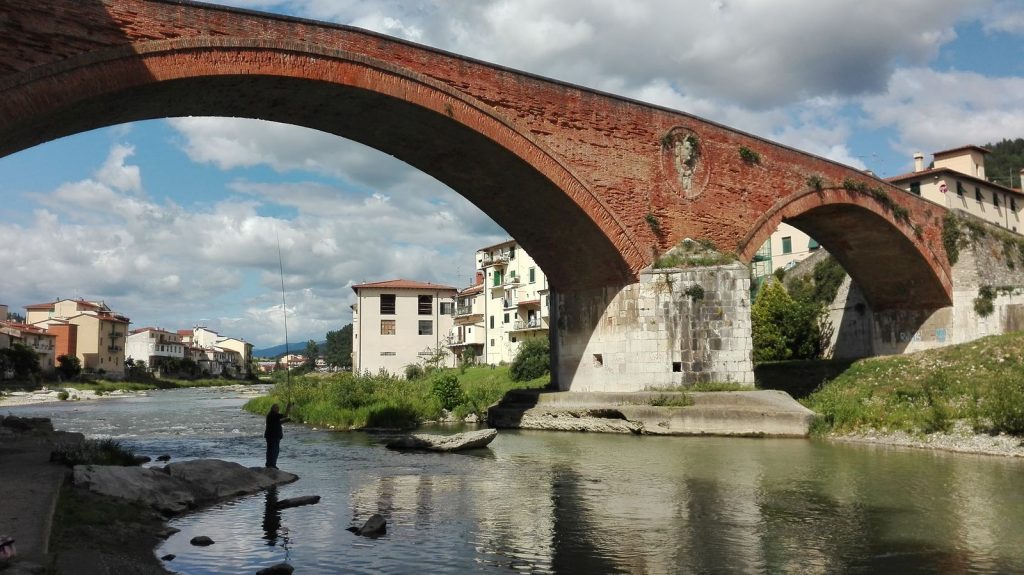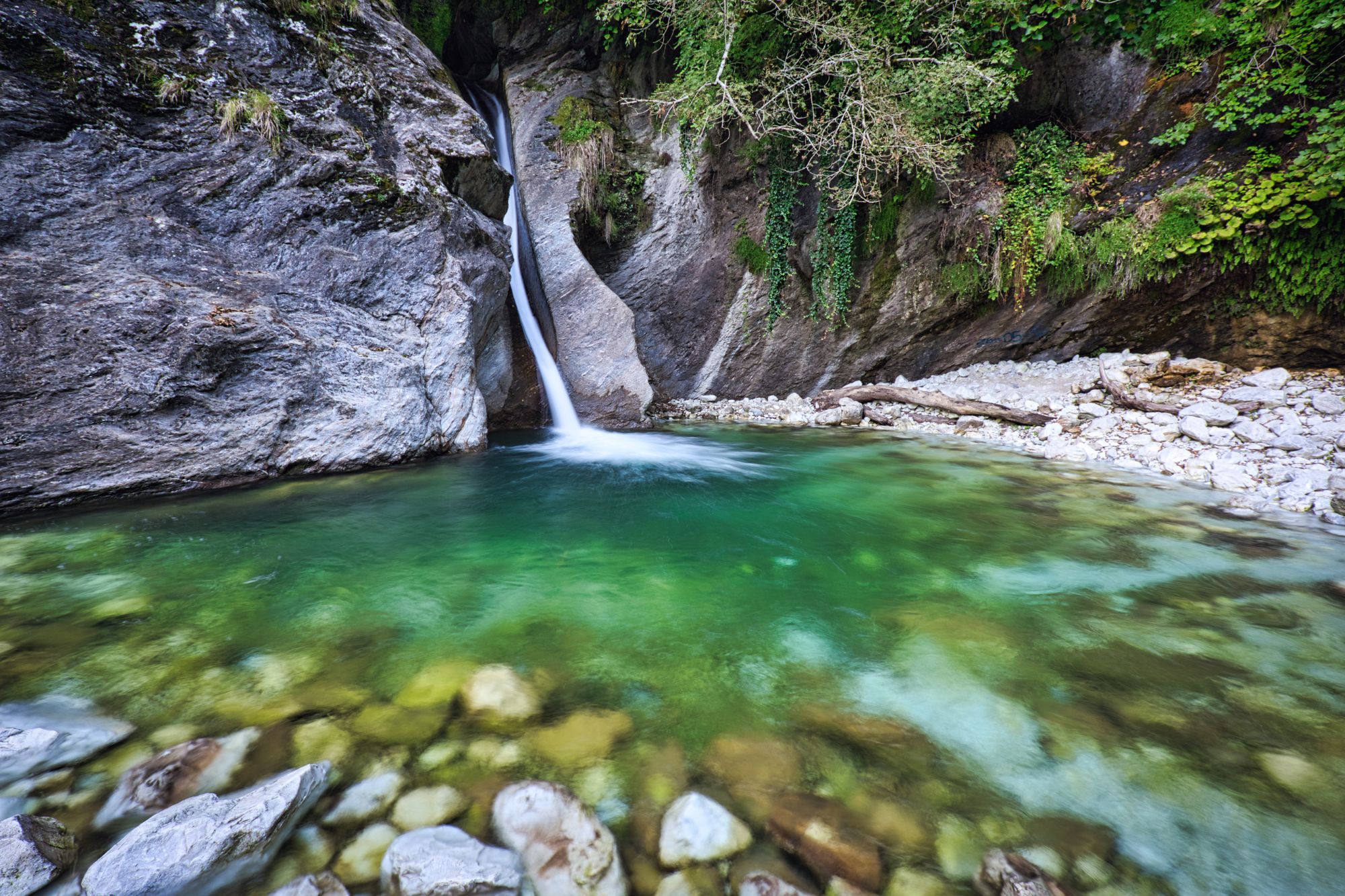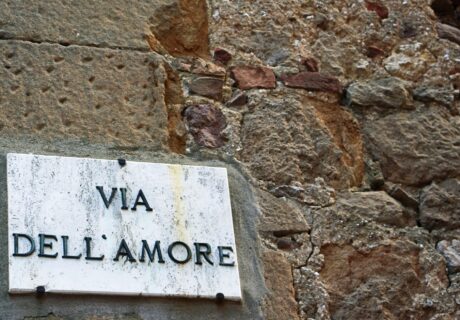The most beautiful bridges to visit in Tuscany
7 min · 9 Dec 2024

Tuscany is rich in architectural beauty, and its historical bridges are among the most fascinating attractions. Below is a selection of the most beautiful bridges in the region that you should definitely include in your travel plans.
Ponte della Maddalena in Borgo a Mozzano
One of the most beautiful (and famous) bridges in Tuscany is the Ponte della Maddalena in Borgo a Mozzano (in the province of Lucca). With its unique ‘humpback’ structure and asymmetrical arches, it is a fine example of medieval engineering. It crosses the Serchio river and is more commonly known as the Devil’s Bridge because of an ancient legend. According to writer Nicola Tergimi, it was built by Countess Matilda of Canossa between the 11th and 12th centuries, but its current appearance is due to the reconstruction carried out by Castruccio Castracani in the early 14th century. Legend has it that the master builder, unable to finish the bridge on time, asked the devil for help, promising him in exchange the first soul to cross it. Once the bridge was finished, however, the devil was mocked by the cleverness of the inhabitants, who had a dog cross it.
Ponte Vecchio in Florence
Among the most beautiful bridges in Tuscany, we could not fail to mention Ponte Vecchio in Florence. Known and loved all over the world, it connects Via Por Santa Maria (corner of Lungarno degli Acciaiuoli and Lungarno degli Archibusieri) to Via de‘ Guicciardini (corner of Borgo San Jacopo and Via de’ Bardi). As we know it, albeit with later alterations, it was built in the 14th century, probably to a design by Taddeo Gaddi, after a flood had destroyed the previous one (a bridge in that position had stood since Roman times). During the Second World War, it was the only bridge in Florence not to be destroyed by the Nazis. Besides being a must for a romantic stroll, it is famous for its high concentration of goldsmiths, established in the 16th century in place of the old butcher shops and fishmongers, making it the ‘most precious bridge in the world’.
Ponte delle Catene in Bagni di Lucca
Located in Fornoli, a hamlet of Bagni di Lucca, the Ponte delle Catene is one of the first suspension bridges built in Italy as well as one of the oldest iron bridges still standing in continental Europe. Interesting both in terms of aesthetics and construction technique, it was erected between 1844 and 1860 on a commission from the Duke of Lucca, Carlo Ludovico di Borbone, and a design by Lorenzo Nottolini, an illustrious architect to whom we owe so many monuments and architectures. The work was based on the innovative use of industrial iron techniques, through the suspension with chains, and a complex underground mechanism that kept the chains in tension. Mined by the German military in 1944, it was rebuilt in 1953 based on the original design.
Ponte della Pia between Sovicille and Chiusdino
Situated at km 61 of the state road No. 73 leading from Siena to Roccastrada, the suggestive Ponte della Pia crosses the Rosia stream with a single archway right on the border between the municipalities of Sovicille and Chiusdino. The present stone structure dates back to the early 13th century, although some have believed to identify elements of Roman times in its foundations. According to tradition, the Sienese noblewoman Pia de’ Tolomei passed by this bridge on her way to marry the man who would later kill her. The story is recalled by Dante Alighieri, in the fifth canto of Purgatory: ‘Deh, when you have returned to the world / and rested from the long road, / the third spirit followed the second, / remember me, who am Pia; / Siena made me, disfecemi Maremma: / salsi colui che “nnanellata pria / disposando m’avea con la sua gemma”. It is said that on the darkest nights his ghost appears on the bridge.
Ponte Mediceo in Pontassieve
The Ponte Mediceo, also known as Ponte sulla Sieve, connects the historic village of Pontassieve with the hamlet of San Francesco di Pelago. It was built in the second half of the 16th century to replace an earlier bridge destroyed by the fury of the overflowing Sieve. Commissioned by Cosimo I de’ Medici to Stefano di San Piero a Ponti and his son Tommaso, it was probably built to a design by Bartolomeo Ammannati. It was restored in 1788 by order of Grand Duke Pietro Leopoldo of Lorraine and then partially rebuilt around 1950 after the damage caused by World War II. It has a fascinating structure consisting of two red brick arches resting on a strong central stone pillar.
Ponte di Groppodalosio in Pontremoli
Nestled in the beautiful Dark Valley in Lunigiana, the Ponte di Groppodalosio is perhaps one of the least known but most fascinating bridges in the entire region. It crosses the river Magra, connecting Groppodalosio to Casalina, and consists of a single, elegant arch 16 metres long. On the Groppodalosio side, it is surrounded by terraces of olive trees and vines, while on the bank towards Casalina by chestnut groves and dryers. As we see it today, it is the result of a reconstruction that took place in the second half of the 16th century. However, traces of much older masonry are still visible under the archway, probably dating back to the year 1000. The bridge can be reached on foot from the state road to Casalina, following the Via Francigena signpost in the direction of Groppodalosio.
Ponte Sospeso delle Ferriere at San Marcello Piteglio
Finally, we conclude this roundup of the most beautiful bridges to visit in Tuscany with the Ponte Sospeso delle Ferriere at San Marcello Piteglio. Nestled in the heart of the Pistoia Mountains, it is a very long footbridge (227 metres long and 80 centimetres wide) connecting the two sides of the Lima stream between Mammiano Basso and Popiglio. Built with advanced engineering techniques on the idea of the engineer of noble Piacenza and Scottish origins Vincenzo Douglas Scotti, it was inaugurated in 1993. It holds the record as the longest suspension footbridge in Italy and until 2006 held the world record, later undermined by the Otsurihashi Kokonoe Yume bridge (Japan). It offers intense emotions and unforgettable views to those who cross it.
Photo gallery © Visit Tuscany








